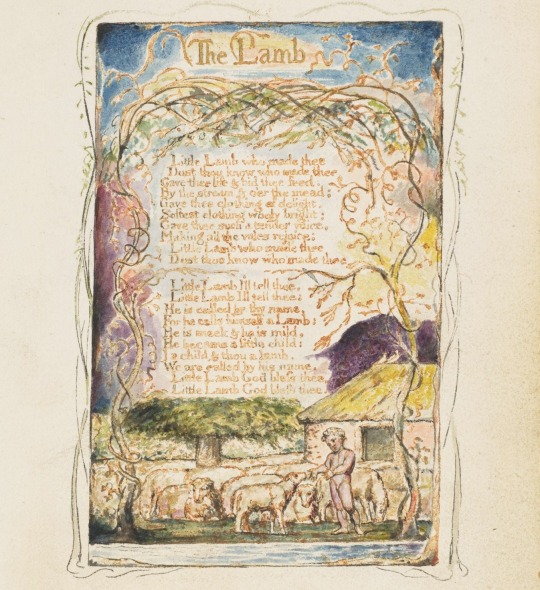JSTOR is a non-profit digital library for the intellectually curious. We help everyone discover, share, and connect valuable ideas. Official account. JSTOR.org | About
Don't wanna be here? Send us removal request.
Text

April is Second Chance Month, a month dedicated to celebrating fresh starts and the breaking of barriers for incarcerated and formerly incarcerated individuals.
All month long, JSTOR Access in Prison has been sharing a compelling series of essays, reflections, and creative work from incarcerated writers, educators, and advocates. The series explores how access to knowledge nurtures growth and community—even in the most restrictive environments.
Read the full series on the JSTOR Blog.
Image: "The Truth Is Prisons Are..." 2016. Courtesy of the Richard F. Brush Art Gallery.
#jstor#jstor access in prison#jstor blog#blog series#second chance month#justice initiatives#prison education#transformative justice
125 notes
·
View notes
Text




April is National Poetry Month, and at JSTOR, we celebrate the boundless creativity that poetry inspires across various forms of expression. 🎨 📜
This month, we highlight the seamless blend of visual art and verse, featuring stunning prints by William Blake from The Metropolitan Museum of Art's open collection. Blake's work exemplifies the powerful synergy between poetry and imagery, reminding us that words and art are profoundly interconnected.
Images: William Blake. Songs of Innocence: Spring. [1789] printed ca. 1825. The Metropolitan Museum of Art.
William Blake. Songs of Experience: The Tyger. [1794] printed ca. 1825. The Metropolitan Museum of Art.
William Blake. Songs of Experience: The Angel. [1794] printed ca. 1825. The Metropolitan Museum of Art.
William Blake. Songs of Innocence: The Lamb. [1789] printed ca. 1825. The Metropolitan Museum of Art.
610 notes
·
View notes
Text


Patricia Smith's "Ethel's Sestina" is one of ten sestinas highlighted in JSTOR Daily's article highlighting modern poets.
"The sestina form is often attributed to Arnaut Daniel, a twelfth-century Provençal troubadour writing in the Occitan language. Since then, the form has been adopted by countless poets across many different languages, including a lot of poets writing in English in the twentieth and twenty-first centuries."
Read nine more sestinas, freely available on JSTOR!
172 notes
·
View notes
Text


Patricia Smith's "Ethel's Sestina" is one of ten sestinas highlighted in JSTOR Daily's article highlighting modern poets.
"The sestina form is often attributed to Arnaut Daniel, a twelfth-century Provençal troubadour writing in the Occitan language. Since then, the form has been adopted by countless poets across many different languages, including a lot of poets writing in English in the twentieth and twenty-first centuries."
Read nine more sestinas, freely available on JSTOR!
#jstor#jstor daily#poetry#national poetry month#patricia smith#sestina#modern poetry#alt text in image description!
172 notes
·
View notes
Text



Our beloved mushrooms are so much more than just forest decorations, motifs in Gothic literature, or images we associate with Hozier's debut album.
Fungi act as "carbon conduits" and enable over 90% of plants to sustain themselves. In "The Fungi in the Carbon Jigsaw" from JSTOR Daily, ecologist and photographer Timo Mendez reveals how fungi helped early plants colonize land, and how their hidden carbon-trading systems today might be the key to fighting climate change.
And he took these beautiful photos to boot! Read the article and view some more photos on JSTOR Daily.
Photos: Amanita muscaria, russula, and ectomycorrhizal fungi. All taken by Timo Mendez.
#ngl... these mushrooms deserve more attention!#jstor#jstor daily#also the author's website links to his instagram where you can see EVEN MORE MUSHROOM PHOTOS!
496 notes
·
View notes
Photo

Um, hey everyone. There’s an entire collection of mushroom drawings on Artstor. And it’s completely open access. Go forth!
https://library.artstor.org/#/collection/87732479
1K notes
·
View notes
Text



Our beloved mushrooms are so much more than just forest decorations, motifs in Gothic literature, or images we associate with Hozier's debut album.
Fungi act as "carbon conduits" and enable over 90% of plants to sustain themselves. In "The Fungi in the Carbon Jigsaw" from JSTOR Daily, ecologist and photographer Timo Mendez reveals how fungi helped early plants colonize land, and how their hidden carbon-trading systems today might be the key to fighting climate change.
And he took these beautiful photos to boot! Read the article and view some more photos on JSTOR Daily.
Photos: Amanita muscaria, russula, and ectomycorrhizal fungi. All taken by Timo Mendez.
#jstor#jstor daily#article#timo mendez#mycology#ecology#climate science#fungi#mushrooms#amanita muscaria#russula#ectomycorrhizal fungi
496 notes
·
View notes
Note
HELLO JSTOR MY LOVE
I exclusively use jstor as sources for my academic research paper, thank you for having one of the best user interface and thank you for the citing button omg
The citation button is game-changing (though be sure to double-check and make sure it's accurate)!
119 notes
·
View notes
Note
I just wanted to stop by and say THANK YOU JSTOR!!!!! The advanced search function is single-handedly saving my end of semester project. Whoever decided to set up one of the best advanced search functions for academic works deserves a raise and a care package of whatever treats they prefer forever.
Thank YOU! We hope you find all the perfect sources for all your projects ahead.
92 notes
·
View notes
Text
In a very Shelleyan twist of fate, a manuscript has been brought back to life–not in a lab, but in a library. 🕯️
At Drew University, librarians and students used JSTOR Digital Stewardship Services to catalog and share the unfinished Mary Shelley biography and research notes of Dr. Betty T. Bennett.
“To me, it was kind of giving her work a second life, which is very Frankenstein. Very Shelley.” – Candace Reilly, manager of Special Collections
Alongside Bennett’s archive, a selection of the Byron Society's realia was also made digital. These items include portraits, busts, Staffordshire pottery, and more, all connected to Lord Byron’s myth and memory. The material came in many forms, and Drew’s Special Collections team used JSTOR’s structured tools to catalog it all.
Now, students are getting hands-on experience in digital humanities through two new courses at Drew. One curates articles on social change from The Drew Acorn (the campus newspaper), and the other rescues deteriorating 19th-century pamphlets.
It’s preservation, it’s participation, and it’s a bit poetic, too. Full case study below!
587 notes
·
View notes
Text
Same concept, different (but many times overlapping) niches
Not sure where to start your research? On JSTOR, you can explore by subject–whether you're into folklore, finance, or feminist studies.
Browse our full list of subjects and find the perfect source.
[Video description: Screen recording of someone scrolling through JSTOR’s subject browse page, displaying a wide range of academic disciplines such as African American Studies, Art & Art History, Economics, Philosophy, and more. The page has a clean, text-based layout with grouped subject categories.]
#the people seeking academic sources and the people seeking fanfic are similar if not at times the same#we support you fanfic consumers and writers#we support you fan studies aficionados
1K notes
·
View notes
Note
You're cool

78 notes
·
View notes
Text
Not sure where to start your research? On JSTOR, you can explore by subject–whether you're into folklore, finance, or feminist studies.
Browse our full list of subjects and find the perfect source.
[Video description: Screen recording of someone scrolling through JSTOR’s subject browse page, displaying a wide range of academic disciplines such as African American Studies, Art & Art History, Economics, Philosophy, and more. The page has a clean, text-based layout with grouped subject categories.]
1K notes
·
View notes
Text

"To the Poem" is one of twelve poems by Frank O'Hara highlighted in JSTOR Daily's recent article, just in time for National Poetry Month. We love the effect produced by enjambment here!
What are some poems you can't keep away from? We'd love to read them :)
#bumping this poem in anticipation of some more to come this week :D#jstor#jstor daily#national poetry month#frank o'hara#20th century#poetry#personism
431 notes
·
View notes
Text

You may know the Italian poet Dante Alighieri quite well, but what about Beatrice Portinari?
Beatrice was one of Dante's artistic inspirations and, in the Divine Comedy (La Divina Commedia), his divine guide. He loved her so much that he romanticized her, elevating her to a celestial and idealized being in his seminal work.
The catch? Dante and Beatrice never actually got together. She was betrothed to someone else the entire time.
Demystify Beatrice with this article from JSTOR Daily.
Image: Narcisse Lecomte, after Ary Scheffer. Dante and Beatrice, 19th century. The Metropolitan Museum of Art.
#jstor#jstor daily#national poetry month#dante alighieri#beatrice portinari#the divine comedy#la divina commedia#the metropolitan museum of art
633 notes
·
View notes
Text
Hi, we're here too 🔭

Official jstor account saw my Bluesky post about how we’re married.
Love of my (academic) life
1K notes
·
View notes
